World 🢖 Europe 🢖 Spain 🢖 Galicia
Churches 🢔 Religious architecture 🢔 Architectural wonders 🢔 Categories of wonders
Wonder
Santiago de Compostela Cathedral
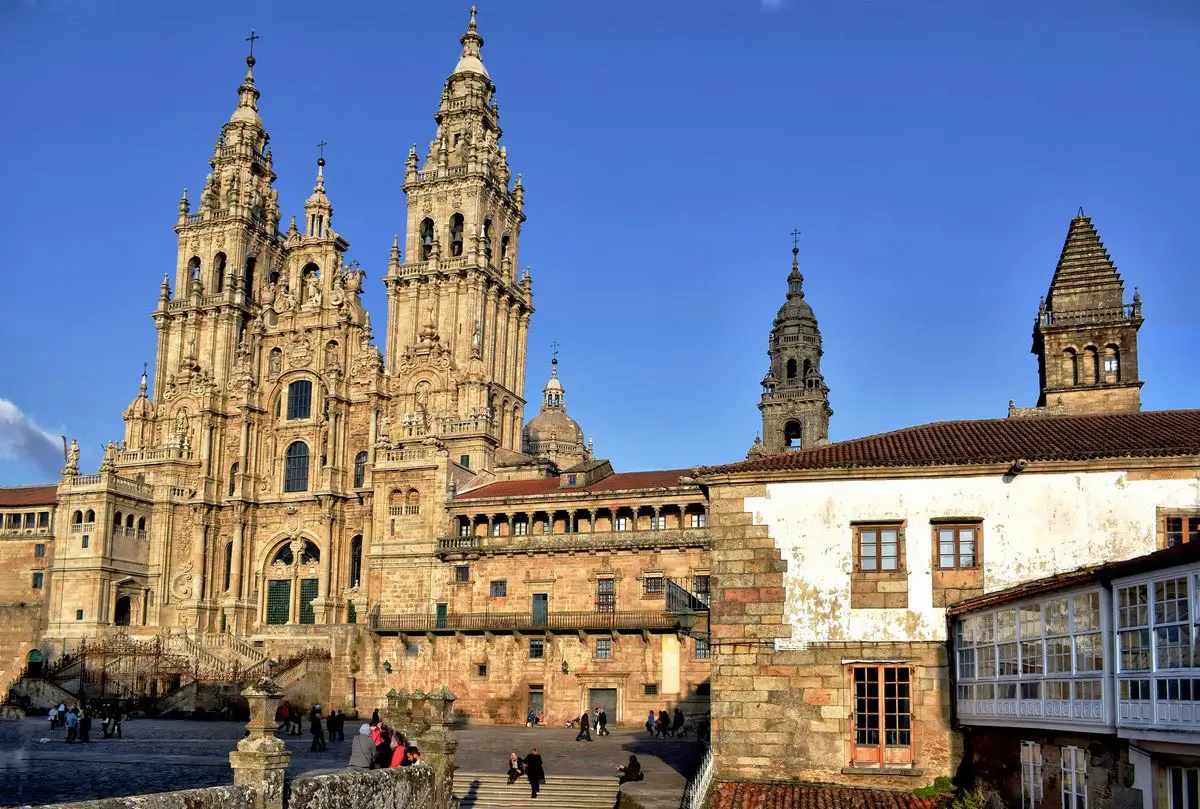
 In short
In short
It was long ago and no one knows for sure how this happened – but maybe the roots of modern Western Europe start exactly in Santiago de Compostela. According to legends here is buried Saint James who brought Christianity to this part of the world and the gorgeous Santiago de Compostela Cathedral is built over his grave./p>
 60.0%
60.0%
GPS coordinates
Name in Galician
UNESCO World Heritage status
Architectural style
Architects
Year of construction
Branch of Christianity
Height
Map of the site
If you see this after your page is loaded completely, leafletJS files are missing.
 In detail
In detail
Saint James
One of the first disciples to join Jesus was Saint James. Soon after the crucifixion of Jesus, his apostles headed to different lands in order to spread the teachings of Christ to the world. Saint James came to Iberian Peninsula.
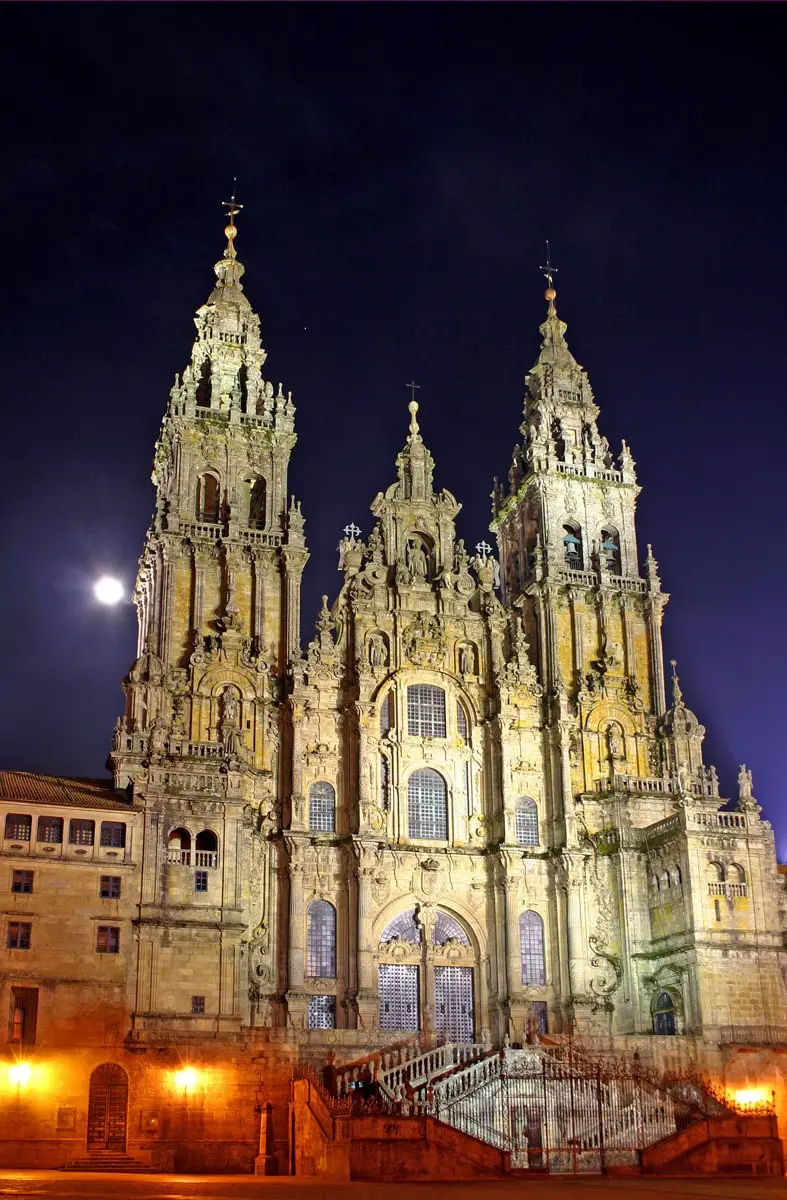
According to legends he saw a miraculous apparition of the Virgin Mary in 40 AD and took this as a sign that he should return home, to Judea. This was an unfortunate comeback – in 44 AD Saint James was beheaded as the first known Christian martyr.
And now comes the most amazing part of the legend: disciples of Saint James laid the corpse of the apostle in a boat (without anyone else) and released it in the Mediterranean Sea at Judea. The boat somehow landed in Galicia (look at the map!) and other followers of Saint James brought his remains inland and buried.
In the 3rd century AD the persecution of Christians started in Iberia and the grave was forgotten.
Rise of Saint James cult
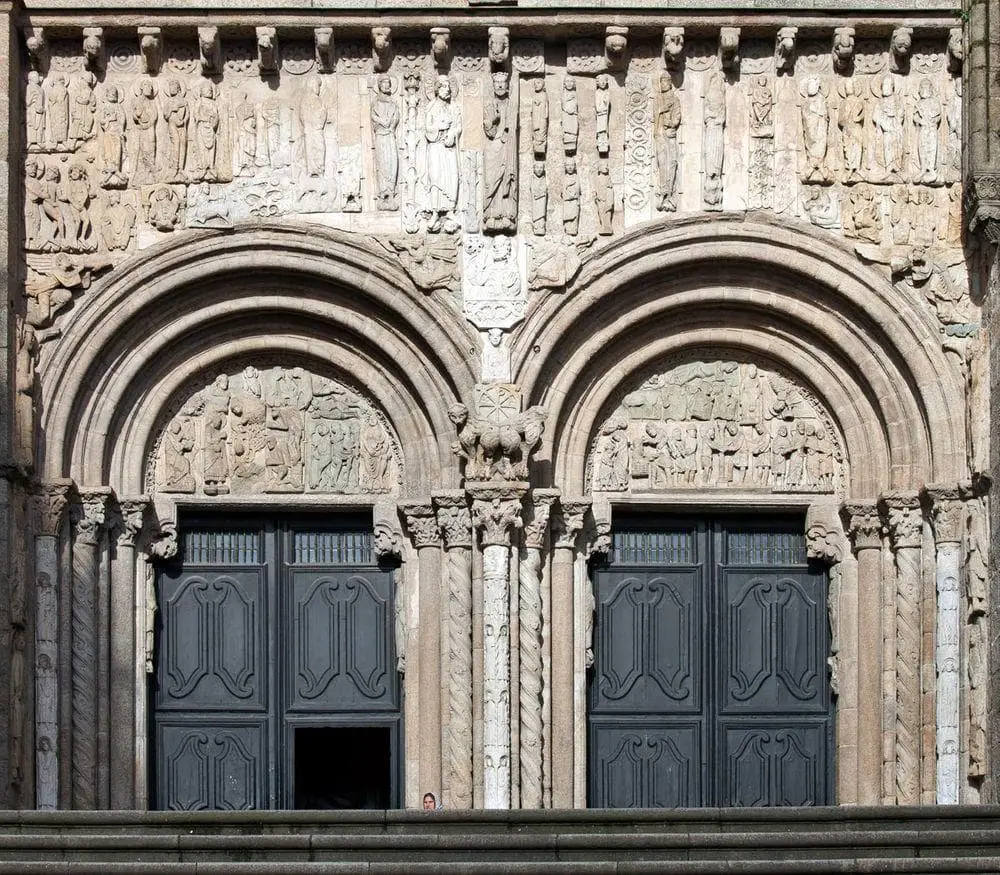
According to yet another legend the grave of Saint James was miraculously rediscovered by hermit Pelagius in 814 AD. This holy man saw an apparition of strange lights in the night sky and followed them until he stumbled upon the abandoned grave.
It seems that this occasion somehow was in time for the politics of these times. King Alfonso II of Asturias and Galicia ordered to construct a chapel in this site and was the first official pilgrim to the site.
In 829 AD the first church was constructed here, the next one – in 899 AD. Not much is known about these structures now.
Way of St. James
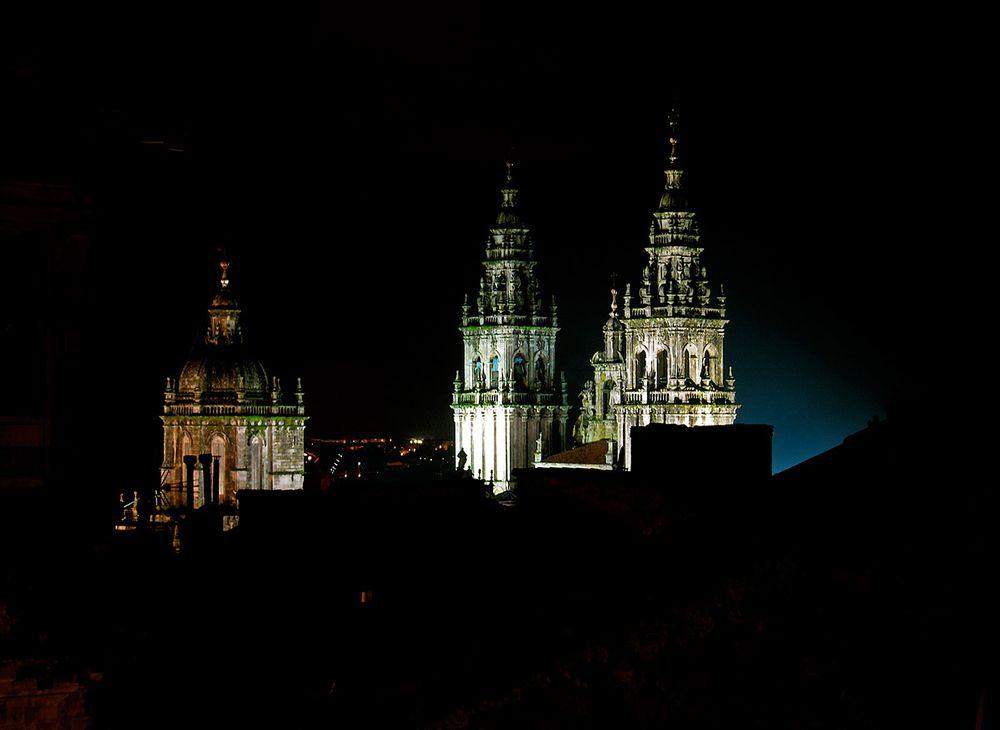
In medieval times many Christians changed the way of their lives through pilgrimage. Each pilgrim has his own reasons for pilgrimage – some want to see the important sites for their religion, others are in a quest for important answers or spiritual awakening, and others may just need some adventures or escape in their lives. The most important pilgrimage routes led to Rome and Jerusalem – but, as time went, the grave of St. James rose as the third most important and lately – even the best-known pilgrimage route.
This phenomenon may have both practical and spiritual reasons. Grave of St. James is located in Western Europe – there was no need to traverse hazardous far away lands. The scenery along the path is gorgeous and diverse, the walk is demanding but not too dangerous, the destination is valuable and of great importance to the history of Christianity in Western Europe.
There are many ways to reach Santiago de Compostela Cathedral – some are walking thousands of kilometres, while others arrive near the church and walk for a short distance.
Pilgrim’s Mass is held in the cathedral every day at noon – this event is the highlight of hard pilgrimage.
Pilgrimage started here already in the 10th – 12th century. It declined in the 15th – 16th century but has retained its popularity up to this day, with huge increase in the number of pilgrims since the 1990s.
History of cathedral
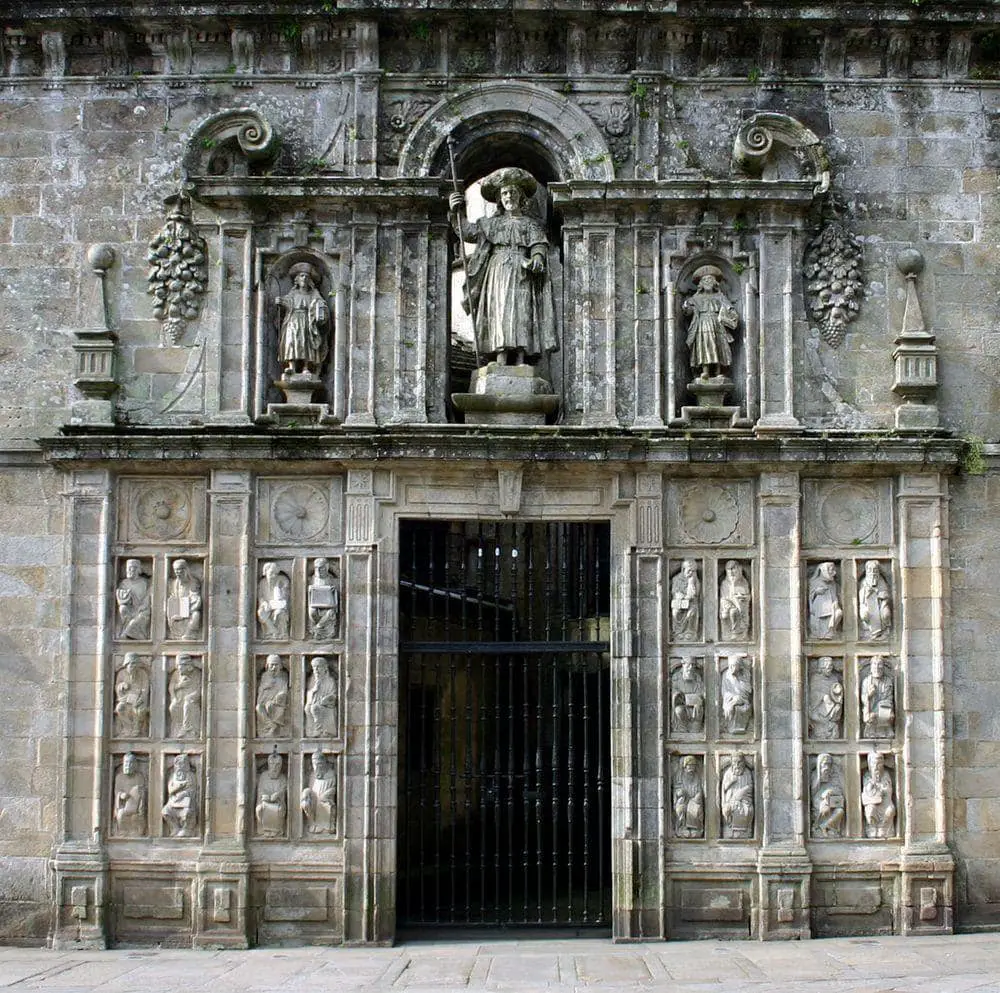
In 997 AD the church above the grave was burned down by the army of the caliph of Cordoba, leaving the tomb of Saint James intact.
Gates and bells of the church were transported to Cordoba and included in Aljama Mosque. Later, in 1236 AD, Christians took Cordoba and transported these gates and bells to Toledo, and now these details are included in the Cathedral of Saint Mary of Toledo.
The construction of the present cathedral was started in 1075. This magnificent structure was modelled in Romanesque style after the Saint Sermin church in Toulouse, the structure was built from granite.
Works proceeded slowly and only by 1122 the structure was largely complete. Cathedral was consecrated in 1128.
As the pilgrimage of St. James Way evolved, cathedral grew in importance and city developed around it. University was built next to the cathedral in 1495, cathedral itself was repeatedly extended and embellished.
Architecture and art values
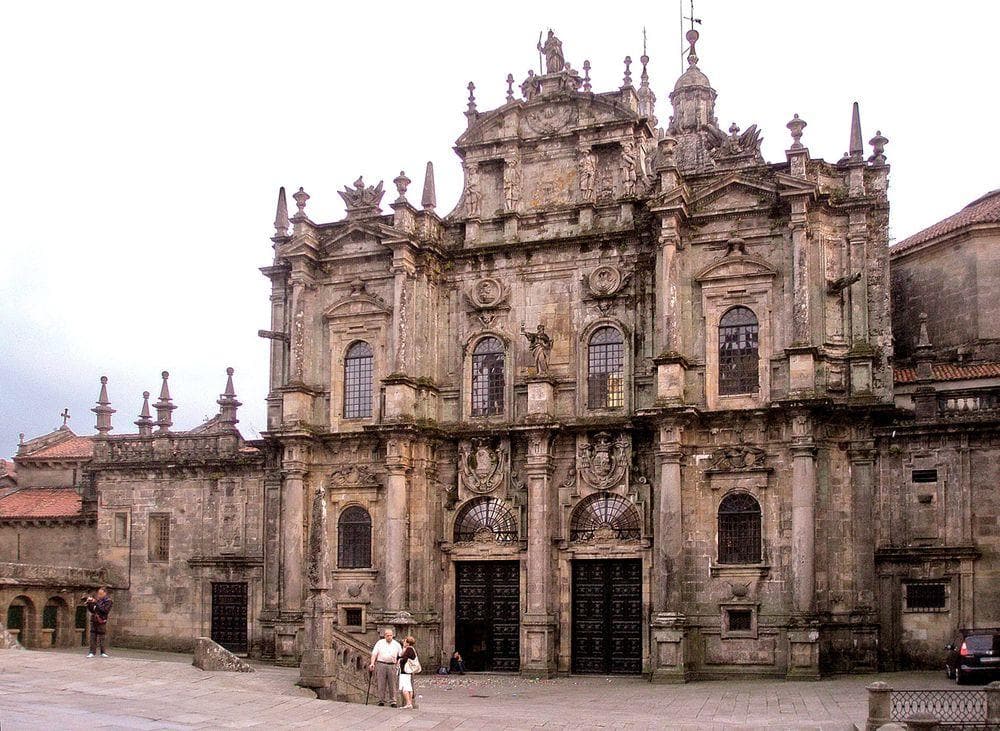
Like other great European cathedrals, Santiago de Compostela Cathedral has evolved throughout the centuries, incorporating diverse styles.
The 97 m long structure has Romanesque forms with the typical barrel vaults. Its interior basically is austere except for the sumptuous organ and choir.
The most valuable treasure of Santiago de Compostela is located in the basement below the main altar. Here are stored relics of Saint James and his disciples – Saint Theodorus and Saint Athanasius.
Most noticeable though are other, later built elements of the cathedral – sumptuous Gothic and Baroque towers and facades.
Cathedral has four towers: two bell towers (the 12th century, with later rebuildings), Carraca tower in the northern part (1738, Baroque) and Clock Tower (1316 – 1680, with clocks added in 1833).
Each of the four main facades of cathedral are outstanding achievements of architecture and art:
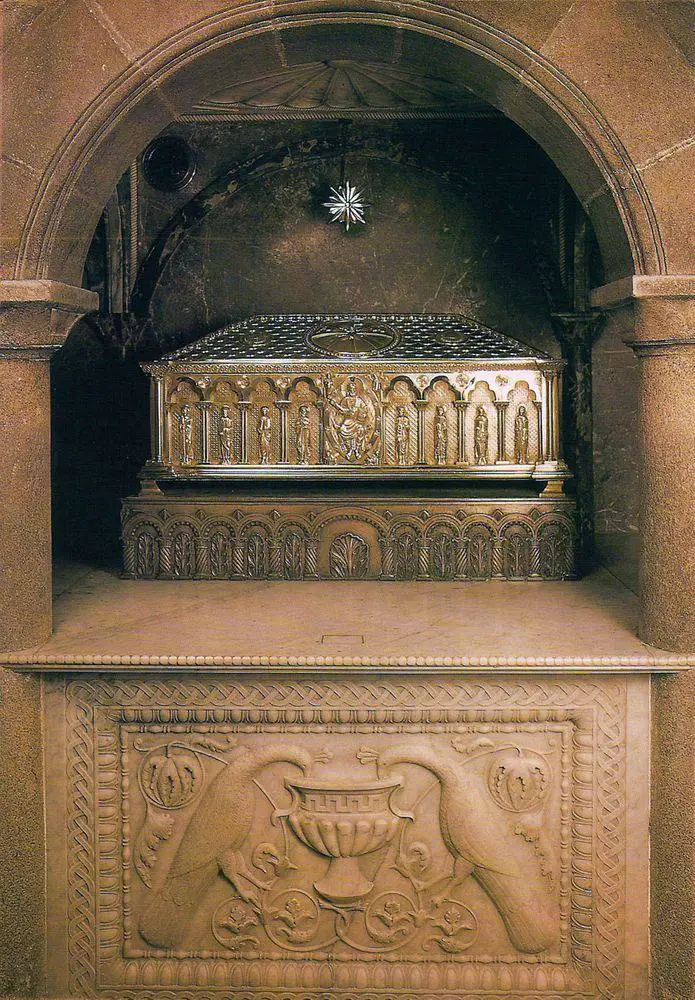
- Praterias facade (southern side of the cathedral) is built in Romanesque style in 1103 by Master Esteban.
- Obradoiro facade (western side) in built in Baroque style in the 18th century and belongs to highest achievements of Baroque architecture in Spain. Great achievement of Romanesque architecture and art is Portal of Glory (Pórtico da Gloria), completed in 1188. It is adorned with sculptures of fantastic animals and many other sculptures, which were covered with colors.
- Acibecheria facade (north side) is designed in Baroque and Neo-Classical styles.
- Quintana facade (eastern side) has two gates – Porta Real (Baroque, 1666 – 1700) and Porta Santa.
An impressive tradition of this cathedral is fast swinging thurible – ornate, 1.6 m high censer, the largest in the world. This censer is named Botafumeiro and is used in specific ceremonies. It swings with a speed up to 80 km/h, leaving trails of thick fumes. It is considered that this powerful "air freshener" was used in order to mask the stench from the crowd of pilgrims who entered the cathedral after weeks long, exhausting pilgrimage without washing.
 Linked articles
Linked articles
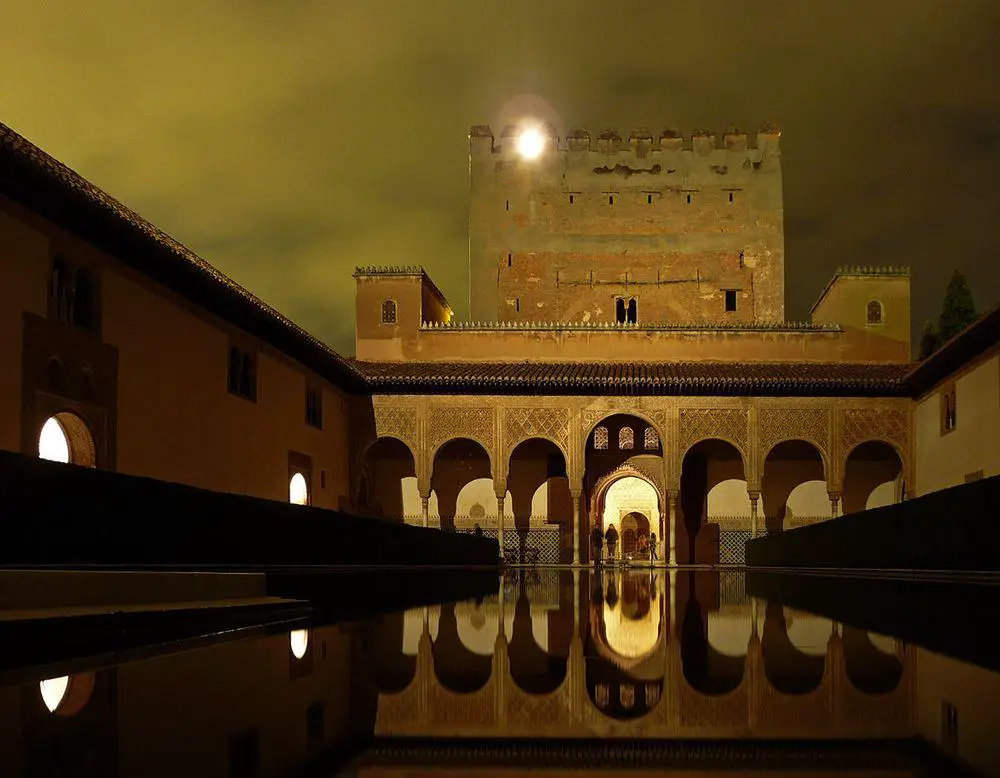
Wonders of Spain
The wealth of cultural heritage in Spain is immense. Throughout the millennia this land has seen the development and demise of many cultures, each leaving unique artworks and structures.
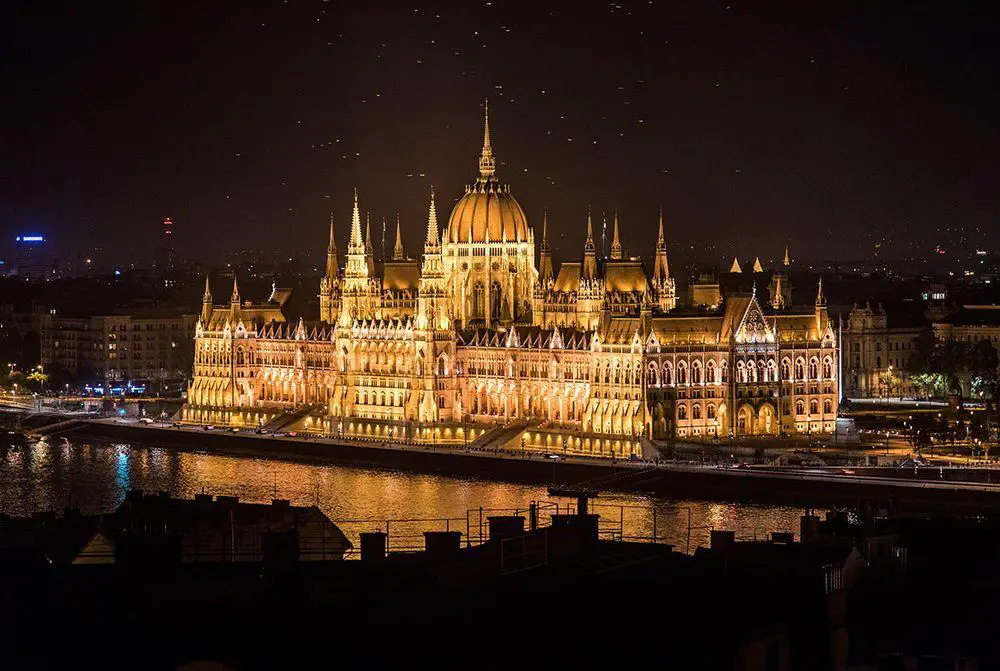
Wonders of Europe
The heritage of Europe is diverse and endlessly interesting. Incomparably rich is the wealth of European historical architecture, but this part of the world has exciting natural heritage and archaeological heritage as well.
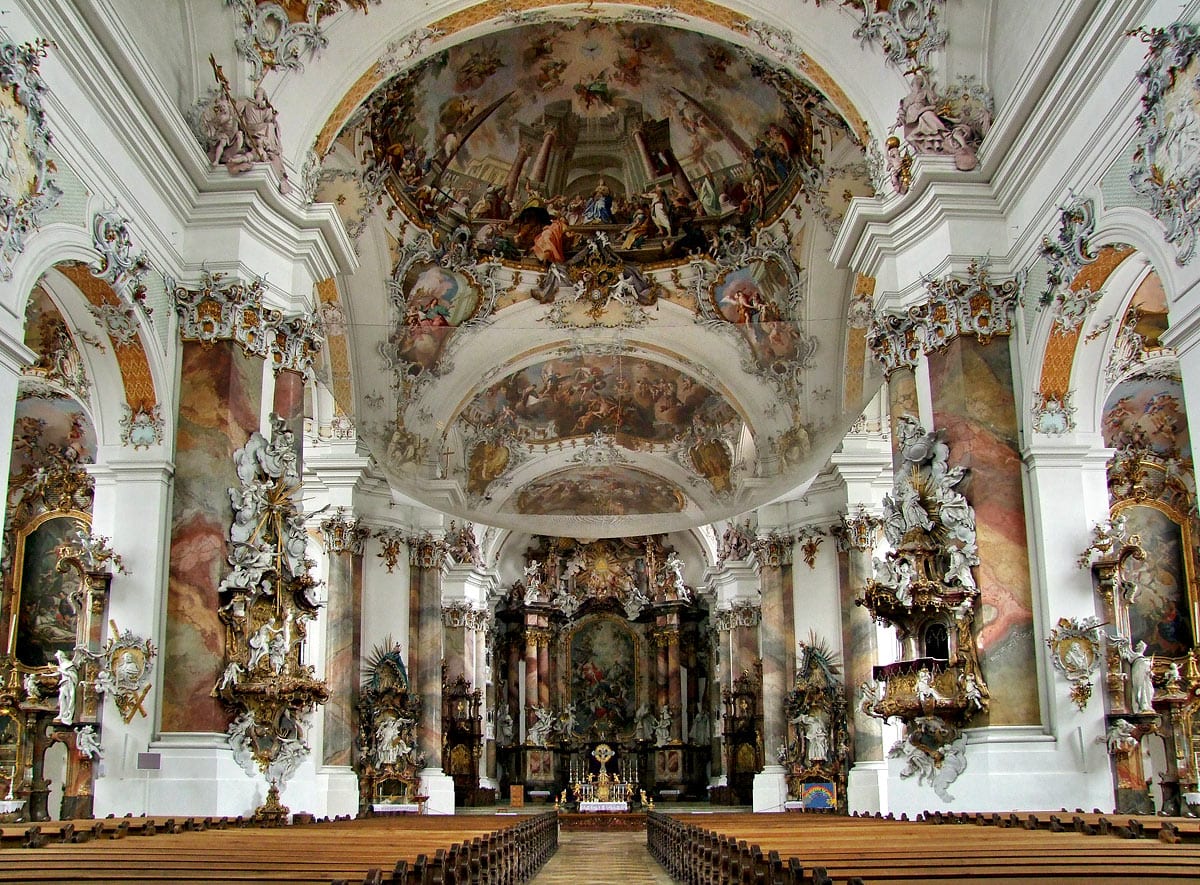
Churches
Throughout the millennia Christian churches have been the epitome of architecture and arts achievements in Western culture.
 Recommended books
Recommended books
The Cathedral of Santiago de Compostela
The Cathedral of Santiago de Compostela is undoubtedly one of the most important and impressive buildings in the Christian world: its sheer size is awe-inspiring. To this day it remains a center of pilgrimage to the sarcophagus of St. James.
Cathedrals and Churches of Europe
This marvelously illustrated volume takes us on a journey throughout Europe’s most beautiful and magnificent sacred buildings. As the very heart and center of most cities and villages, churches, cathedrals, and basilicas have shaped the regional landscape in Europe to a great extent.
[{“@context”:”https://schema.org/”,”@type”:”TouristDestination”,”name”:”Santiago de Compostela Cathedral”,”description”:”Santiago de Compostela Cathedral is one of the most important church buildings in the Western Europe. Constructed over the grave of St James.”,”url”:”https://www.wondermondo.com/santiago-de-compostela-cathedral/”,”geo”:{“@type”:”GeoCoordinates”,”latitude”: “42.88061”,”longitude”:”-8.544365″}}]
[{“@context”:”https://schema.org/”,”@type”:”BreadcrumbList”,”itemListElement”:[{“@type”:”ListItem”,”position”:1,”name”:”World”,”item”:”https://www.wondermondo.com/wonders-of-the-world/”},{“@type”:”ListItem”,”position”:2,”name”:”Europe”,”item”:”https://www.wondermondo.com/wonders-of-europe”},{“@type”:”ListItem”,”position”:3,”name”:”Spain”,”item”:”https://www.wondermondo.com/wonders-of-spain”},{“@type”:”ListItem”,”position”:4,”name”:”Galicia”}]}]


